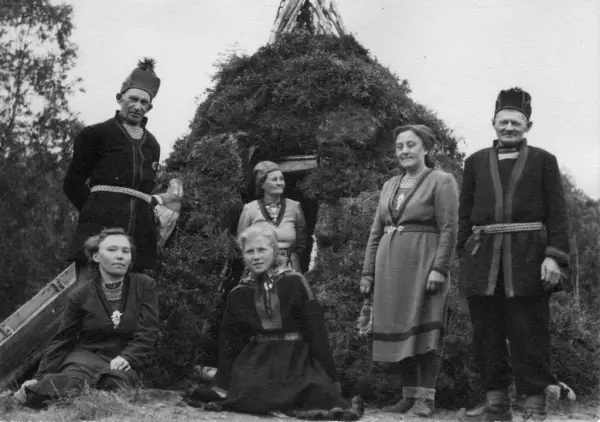MUSEUME JÏH POLITIHKE - Museums and politics
The Sámi collection from Norsk Folkemuseum includes a number of household items from the Røros Sámi area. The collection was assembled by the Ethnographic Museum in the period 1889-1950. It was transferred to Norsk Folkemuseum in 1951, placing Sámi history on an equal footing with Norwegian. Moving the collection was a clear symbolic break with the 19th century idea that the Sámi people were a foreign culture in Norway. This is the first time that objects from this collection have been exhibited in the Røros Sámi area.
In 2012, the Sámi Parliament and the Norwegian Folk Museum signed an agreement to return half of the Sámi collection to the Sámi museums in their home areas. The project Bååstede – return of Sámi cultural heritage is ongoing, but the work is dragging on. This is due mainly to a lack of funding and satisfactory storage conditions in the Sámi museums.
In 1904, the Ethnographic Museum moved into the newly-constructed History Museum. The massive building on Tullinløkka in Oslo housed the Sámi collection from 1904 to 1951, when the objects were transferred to Norsk Folkemuseum.
Photos (from left):
1. The picture is probably from an event in Røros in 1948. In the 1950s, Røros Museum worked on a Sámi section, and when the new museum building was completed in 1955, a turf hut was erected in the open-air museum.
2. Cheese mould and milk bowl in the Røros Museum’s collections
3. Exhibitions of people were common in Europe and America in the 19th century. Ethnic groups which were regarded as exotic were displayed at circuses and in zoos. From 1822 until well into the 1930s, many families from the Røros Sámi area took part in such displays. Displays involving people were also common in open-air museums in Norway, in this case to pass on cultural history to farmers, fishermen or Sámi people. During the 20th century it became museum policy to place Sámi culture on an equal footing with Norwegian.The top picture shows a group of Røros Sámi people on tour in 1926, probably in Germany.The bottom picture is from the Trøndelag Folkemuseum in Sverresborg in 1935.
4. In 1904, the Ethnographic Museum moved into the newly-constructed History Museum. The massive building on Tullinløkka in Oslo housed the Sámi collection from 1904 to 1951, when the objects were transferred to Norsk Folkemuseum.
5. Matchbox. Collected by Yngvar Nielsen on his trip to Trøndelag in 1889.





